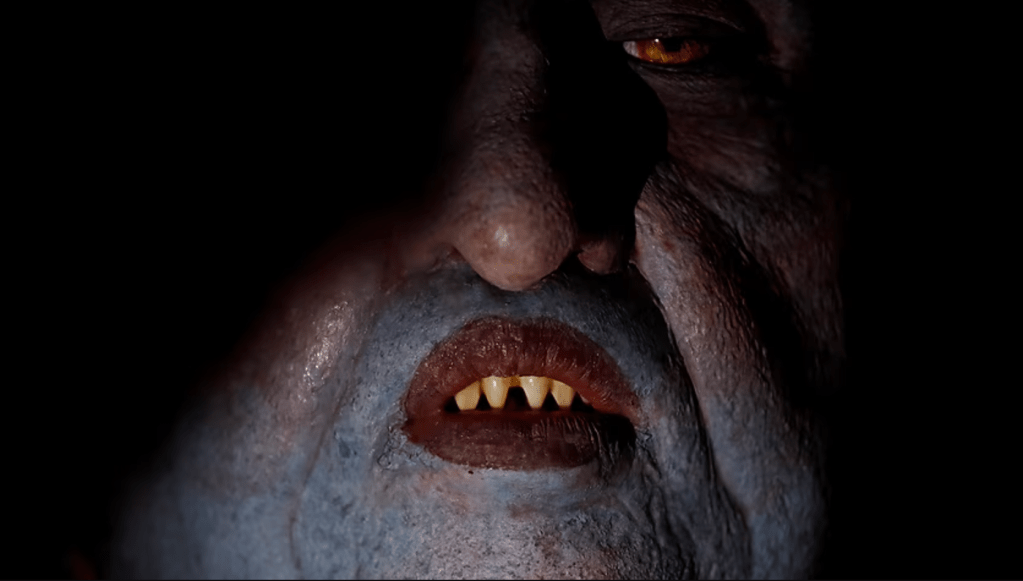Night Bloomers is a five-part horror anthology of Korean-Australian ghost stories coming to SBS this weekend. Shot on Gadigal, Wangal, and Burramattagal coutry, the collection uses haunting sound and rich cinematography to weave uncanny threads into the real anxieties of intergenerational conflict, migration trauma, and the challenges of third-culture kids.
The anthology is a beloved format for horror: as we saw with Guillermo del Toro’s Cabinet of Curiosities, each story can deliver rapid shocks with creepy echoes between instalments. With writer-director Andrew Undi Lee at the helm, Night Bloomers is a more cohesive anthology than precedents like ABC’s Dark Place . The consistency creates intriguing motifs, which sometimes risks becoming repetitive, but it also builds more nuanced shades in diaspora allegories.
The first instalment starts with Sophie, whose white friends snidely criticise her inauthentic japchae: the microaggressions that often propel a ‘social thriller’ become vividly sinister with squared-off shots, chiaroscuro lighting, and punchy sound design. We’re sympathetic to Sophie’s first outburst, and hopeful as she timidly befriends a clerk at the local Korean grocer.
The short effectively sets up overarching themes, while subverting expectations of a revenge story. Bursts of music and colour keep the pace tight, and a queer subplot deepens Sophie’s struggles. The un-subtitled Korean cleverly leaves some audiences feeling as confused as Sophie, but Sophie’s inability to connect with people is not entirely about cultural fluency.
Ritual
The second instalment similarly follows a young woman struggling to learn Korean traditions: this time, Hannah is trying to help her mother perform a ritual honouring her late grandmother. Hannah’s mother fusses: the ritual must be completed by midnight, and she hasn’t been able to collect the right pears. Again, smartphones help the young women quickly up-skill in Korean customs, but inevitably create bigger problems.
Read: Horror films in the age of Covid: how the pandemic caused a boom
The anxiety comes from time slipping away: not just to complete the rites before midnight so grandmother’s ghost doesn’t go mad, but for the mother to pass on this ancestral connection before her own memory decays. If you roll your eyes at the tradition-versus-technology premise, you’ll miss the critical minutes passing – not to mention whatever’s hurrying through the shadows.
The third instalment has another mother-child conflict: this time a son decluttering his thrifty mother’s home. She unsuccessfully tries to ease the confrontation by offering to cook for her son. A recovery mission rummaging through the tip uncovers an ominous statuette. It’s not entirely clear the trinket was ever hers, and of course it soon transforms into a grotesquely large goblin.
The creature effects are goofy, but that only enhances the growing horror as the mother joyfully finds a willing boy to feed: first he appreciates her traditional cooking, but then he wants. It’s a heavy parable for how the past can consume us, but emotionally raw performances make this one of the most chilling stories.
Lurid monsters
The fourth episode has some similarly lurid monsters, but a refreshing uptick in pace. Simon and Xavier are two paramedics in love. The script craftily establishes complex tension in their relationship: Xavier wants kids, but Simon dreads coming out. This far into the anthology, the double entendres will be difficult to miss.
Simon fears that queerness makes him an unnatural creature condemned to darkness, and it’s almost plausible that he’s referring to conservative Korean parents. It’s a thin premise, but it snaps energetically when the jig is finally up, making a vindicating climax.
Read: Run Rabbit Run: a cinematic milestone ten years too late
The instalments are bookended by a haunting traditional dance, which gradually instils modern beats: Simon’s narrative doesn’t stand especially well on its own, but the integration of his melody in the overarching composition is the strongest.

Night Bloomers. Image: SBS.
The final story follows teenage James, who struggles to live up to his father’s expectations. His burnout friend Ryan bears the troubling cross-chapter pattern of unexplained bruises. When Ryan and James sneak out, a supernatural presence sneaks along with them. This closing instalment wobbles on a thin line between urban legend and anti-drug PSA, which puts a dampener on the emotional climax of James’ father opening up.
Read: Best Australian horror films – top 20
But the fourth wall starts eroding in some interesting ways, so while some chapters are less effective than others, the repetitive motifs of the anthology feel purposeful in the music and the script.
Speaking as an avid genre fan with only basic familiarity with K-horror and its roots in Korean Shamanism, I imagine there are more subtleties that I missed entirely. A talented storyteller like Lee wields this an advantage: audiences who recognise what’s coming feel growing dread at the unspoken clues, while a lay audience becomes terrifyingly lost.
Australian horror crawls easily under your skin, and Night Bloomers uses a genre about monstrous misfits and the shadows between borders to craft bloody fables for the diaspora.
Night Bloomers premieres on 28 October on SBS On Demand and SBS VICELAND.
Actors:
Ra Chapman, Deborah An, Helen Kim, Joshua Park, Rayden Casano, Jaewoo Kim, Jeno Kim, Charles An, Cooper Mortlock
Director:
Andrew Undi Lee
Format: TV Series
Country: Australia
Release: 28 October 2023





